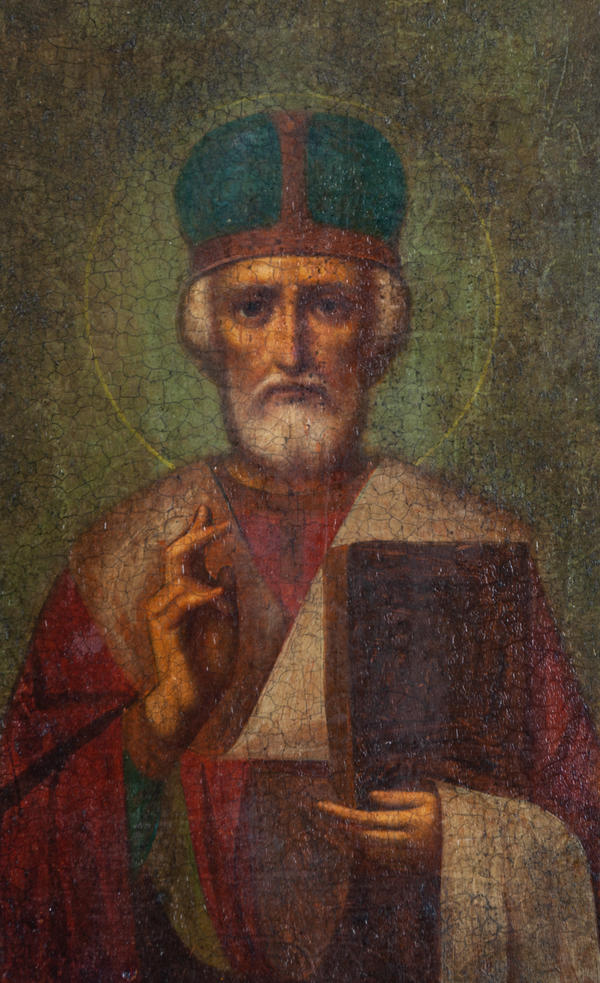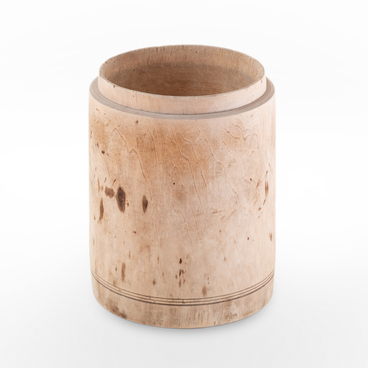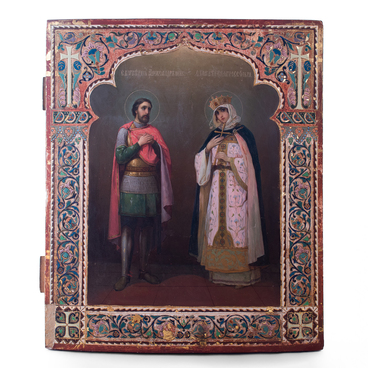The collection features an icon with a half-length image of St. Nicholas the Wonderworker in a special headdress called mitre, and episcopal vestments. While the gesture of the right hand expresses a blessing, in his other hand the saint holds the Gospel. A thin yellow line above his head symbolizes a halo.
The icon board is made of solid linden, it has mortise dowels as connecting elements. There is a slight deformation on the front side of the exhibit. The edges are painted with modern dark olive paint. The ground, which is the initial layer applied to the surface, is hard to analyze. The back side is processed with a modern grinding machine. The paint layer is thin and uneven. The multi-layered lacquer coating partially turned yellow. There is a considerable under-varnish contamination, the paint layer is partially lost, for example, on a small fragment on the beard — about 1×1 millimeter. The icon also has a dent in the lower left corner — about 3×4 millimeters.
Nicholas the Wonderworker was born in the second half of the 3rd century AD in the city of Patara, one of the ancient Roman provinces, now belonging to the territory of Turkey. He came to the priesthood largely thanks to his uncle, the Bishop of Patara. There are many descriptions of the life of St. Nicholas, as well as of the miracles that he performed.
To this day, Nicholas the Wonderworker is one of the most revered saints in various churches: Orthodox, Catholic, Anglican, Lutheran and Ancient Eastern Orthodox. He is considered the patron saint of children and seafarers.
For example, in the hagiography of St. Nicholas, there is a mention of a shipwreck, which he witnessed during a trip to Egypt. According to one version, he resurrected the dead sailor, according to another, he saved the ship from sinking by praying.
Stories also often talk about St. Nicholas helping children from poor families. Hence an idea arose that he is the prototype of Santa Claus — a folklore character who brings gifts to children on Catholic Christmas Eve.
The relics of St. Nicholas the Wonderworker are
kept in many temples around the world, including in Russia, but the main part
is located in the city of Bari in Italy.



